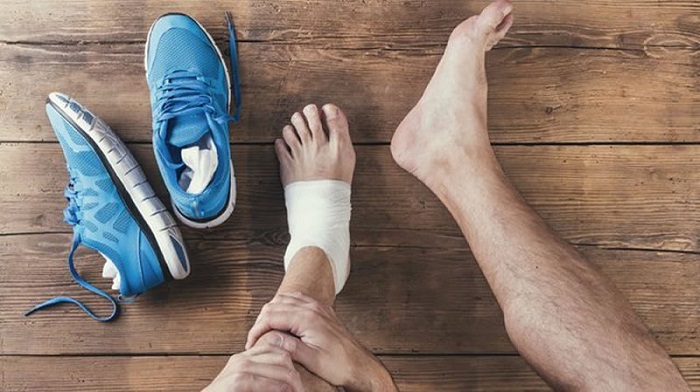
Physio management of forefoot pain
Have you ever considered walking only on your heels during your day to day activities? That would have been quite difficult and stressful.
Advertisement
Individuals with forefoot pain find it a challenge to perform basic activities such as walking without experiencing pain and some may attempt to develop various strategies to move from one activity to the next without increasing this pain.
Physiotherapy provides various options for management of such conditions. Forefoot pain may develop as a result of too much stress being placed on the foot over a period of time.
After the physiotherapist has examined your foot, a treatment plan or goal is set out with your input. This ensures your full cooperation with the treatment hence a better recovery.
Education
Education about your condition remains paramount because when you get to understand the reasons which may have caused your condition then it’s less likely to reoccur.
The way you walk may have an impact on the amount of stress you place on the ball of your foot.
The physiotherapist will educate you on equally distributing pressure or weight in both feet when you sit, stand, walk or run etc.
Being conscious of your posture in different positions will enable you correct any inappropriate stances which you may have adopted over a prolonged period of time.
Corrective footwear
Some individuals may require corrective shoes to place the foot in the proper position at all times during daily activities. The corrective shoes also ensures an even distribution of the body weight and prevents uneven distribution of pressure in the foot when the person stands, walk etc.
When the foot is in an appropriate position it also ensures that the muscles of the feet are active hence preventing weakness in the foot muscles.
In addition to wearing appropriate footwear, the individual is taught corrective foot posture exercises to ensure that the appropriate posture is maintained throughout the day.
These exercises are easy to perform and have the advantage of strengthening your foot muscles so that the placement and weight distribution in your feet are appropriate to prevent recurrence of the condition.
Flexibility exercises
The condition may cause stiffness in the ankle joint and performing flexibility exercises enhances the movement in the joint.
This improves your ability to move your foot with a decrease in pain.
- Sit comfortably with your foot supported by a foot rest or sit in bed with your affected leg(s) stretched out in front of you.
Before you begin the exercises ensure that your toes point towards the ceiling.
Gently move your foot towards the ground and hold the position briefly and move your foot towards your body. Hold this position briefly and relax. You may repeat as often as you can tolerate throughout the day.
You may also perform this exercise in bed as your legs are stretched out. Gently turn your affected foot inwards so that the sole of your foot faces your other foot. Hold the position briefly and relax.
Next, turn your foot in the other direction away from your other foot. Try and hold the position briefly and relax.
Only perform the exercise when you have minimal pain or discomfort. You may perform this exercise throughout the day.
Strengthening exercises
Your muscles are able to perform and accomplish various tasks because they have certain qualities including strength. It’s obvious that strong muscles are able to perform activities which weak muscles cannot.
- Walking on your toes may be challenging but it helps to strengthen the muscles of your feet. Stand barefooted against the wall. Slowly raise yourself up and hold the position between 20 – 30 seconds and lower yourself to the ground again and relax.
You may repeat this as often as you can tolerate during the day. You may also walk around on your toes for 20 – 30 seconds instead of only standing on your toes.
You may increase the duration of walking or standing on your toes when your foot muscles get stronger.
- Sit comfortably with your affected foot on the floor and place small objects in front of your foot. Slowly move your toes over the object and pick it up with your toes.
Lift up the ball of your foot off the floor so that only your heel remains on the floor. Briefly hold the position and lower the ball of your foot to the floor, releasing the object.
You may repeat this exercise often throughout the day.




